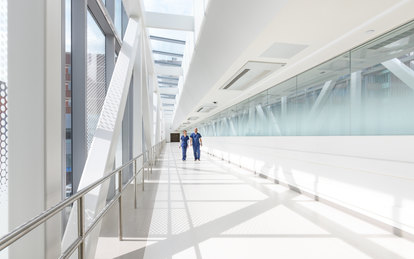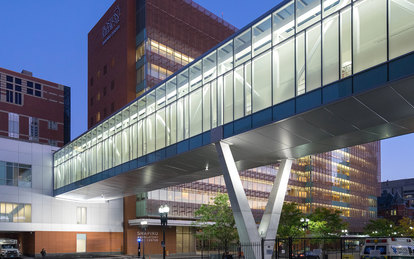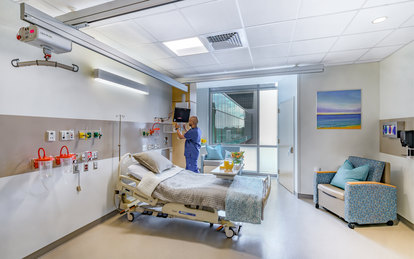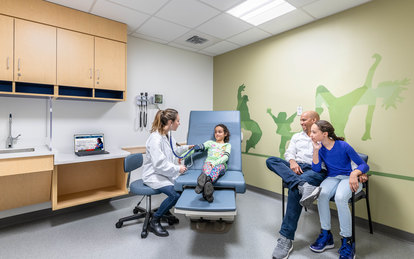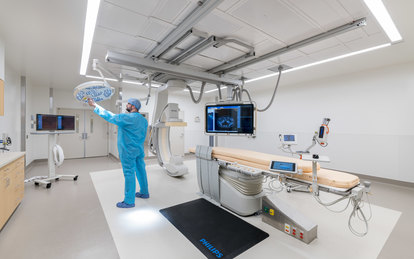Boston Medical Center Menino Addition and Renovations
We understand the importance of space in a medical facility. A facility has to support a hospital's functions: form follows function. We also understand the necessity of keeping a hospital operational when it is in the process of expanding and renovating. It's an enormously complex undertaking in any circumstance, but this project and its complex 60-phase renovation schedule demonstrates our ability to combine design and Lean strategies to keep things running well for patients and staff.
Client
Boston Medical Center Menino
Location
Boston, Massachusetts
Markets/Services
Academic Medicine, Acute Care, Architecture, Health, Interiors, Lighting Design, Medical Planning, MEP Engineering
Size
350,000 SF
Featured Awards
Healthcare Award, Vision Design Awards by Floor Focus, 2018
Boston Medical Center (BMC) is transforming its clinical campus to prepare the hospital to thrive well into the future. The multi-year redesign consolidates inpatient operations to the Menino side of the campus and transitions services out of the Newton Pavilion. By eliminating duplicate services, the hospital campus is expected to save more than $25 million in operating costs annually.
The consolidated hospital design will dramatically increase the number of private rooms, providing an additional 100,000 SF and reconfiguring the 250,000 SF of space. The project also includes a new pedestrian bridge connecting the main hospital to the loading dock and helipad across the street, enabling valuable time to be saved as patients are transported from the helipad to the emergency department in lieu of ambulance transport.
The bridge was prefabricated and lifted into place in a single assembly, minimizing downtime and disruption on the busy Boston street. The highly visible "yellow tube" that ran overhead for decades was removed, significantly improving the image of the hospital on Albany Street.
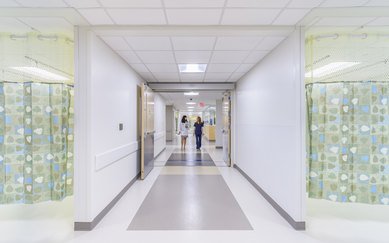
Throughout the transformation, patient-centered care has remained the primary focus. BMC’s mission: “Exceptional care without exception,” was integrated into the transition process and informed all design decisions.
Because of the site’s urban context, and how frequented the hospital and its emergency department are, it was necessary that our integrated project delivery team carefully phase the project, ensuring that neither the hospital’s operations nor the surrounding streets be disrupted. To avoid conflicting stakeholder input, we implemented workshops that integrated different user groups to allow for a more comprehensive consensus.
The result is a transformative, welcoming and connected space in support of patient-centered care.
